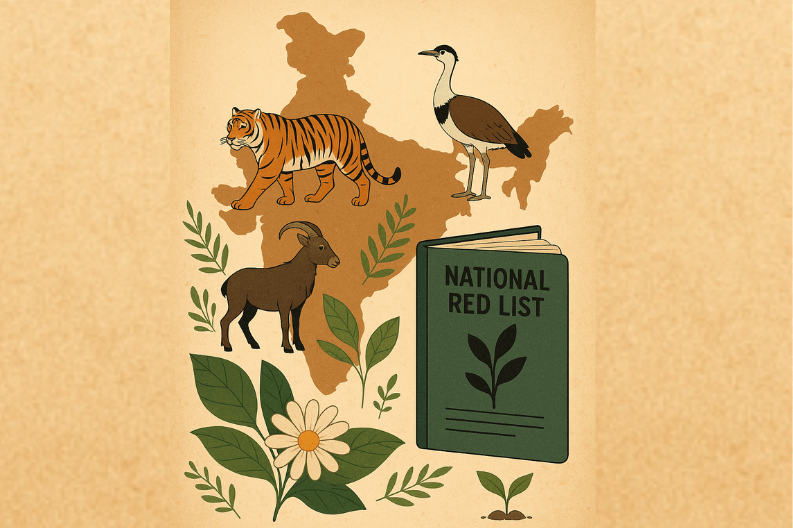India unveils National Red List to protect its rich biodiversity, marking a major step forward in environmental conservation. The announcement was made at the IUCN World Conservation Congress in Abu Dhabi by Environment Minister Kirti Vardhan Singh. He explained that this new initiative reflects India’s strong focus on biodiversity documentation, threat assessment, and long-term conservation strategies.
India is among the world’s 17 megadiverse nations, home to four major biodiversity hotspots: the Himalayas, the Western Ghats, Indo-Burma, and Sundaland. Despite covering only 2.4% of the Earth’s land, the country shelters about 8% of the planet’s plants and 7.5% of its animals. Many of these species are endemic, with around 28% of plants and more than 30% of animals found nowhere else.
The new roadmap builds on India’s long history of wildlife protection. The Wildlife (Protection) Act, first introduced in 1972 and updated in 2022, strengthens efforts to safeguard species listed under global conventions like CITES. The government also aims to meet commitments under the Convention on Biological Diversity (CBD) and the Kunming-Montreal Global Biodiversity Framework (KM-GBF).
The National Red List Assessment will evaluate the conservation status of species in a coordinated, inclusive, and science-based manner. It will be led by the Zoological Survey of India (ZSI) and the Botanical Survey of India (BSI), working closely with IUCN-India and the Centre for Species Survival. Together, they will provide reliable data to guide conservation policies and strategies.
A key part of the initiative is documenting traditional knowledge, which can offer valuable insights into sustainable management. India also plans to publish National Red Data Books for plants and animals by 2030. These will serve as important references for researchers, conservationists, and policymakers.
By following globally recognized IUCN guidelines, India is taking its first major step toward a nationwide species threat assessment. This collaborative project will involve scientists, taxonomists, and policymakers, ensuring decisions are based on solid scientific evidence. It also aims to build capacity and encourage collaboration among conservation stakeholders.
The project’s success will depend on accurate species identification and strong coordination. ZSI and BSI’s expertise will help bridge knowledge gaps and improve understanding of India’s ecosystems. Moreover, sharing information with the public and involving communities can make conservation efforts more effective and people-oriented.
Other countries, including Bangladesh, Sri Lanka, and China, have carried out similar assessments. However, India’s plan is broader and more ambitious, aiming to become a global model for biodiversity protection. Its outcomes are expected to contribute significantly to global sustainability goals and inspire other nations.
In conclusion, India unveils National Red List to protect its plants and animals, reaffirming its leadership in global biodiversity conservation. With strong scientific backing, inclusive policies, and active collaboration, this initiative will safeguard natural heritage for future generations and strengthen India’s role in protecting the planet’s ecosystems. 🌱



